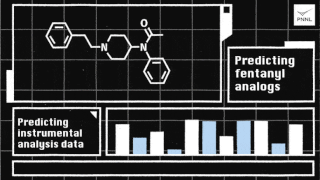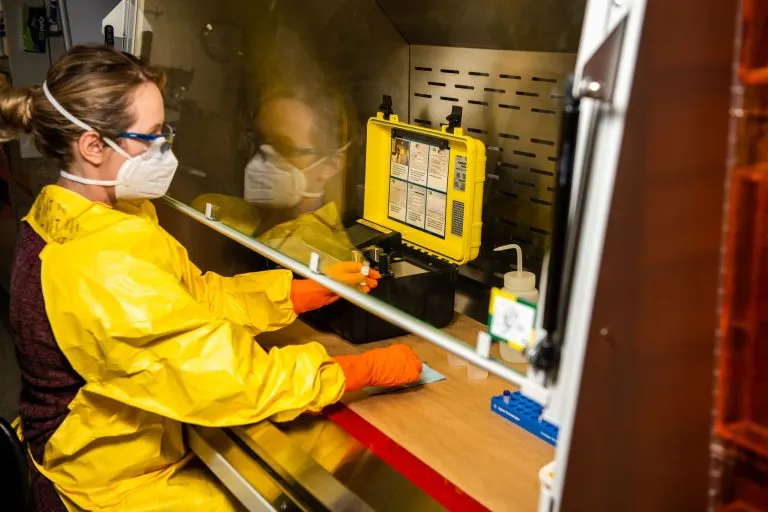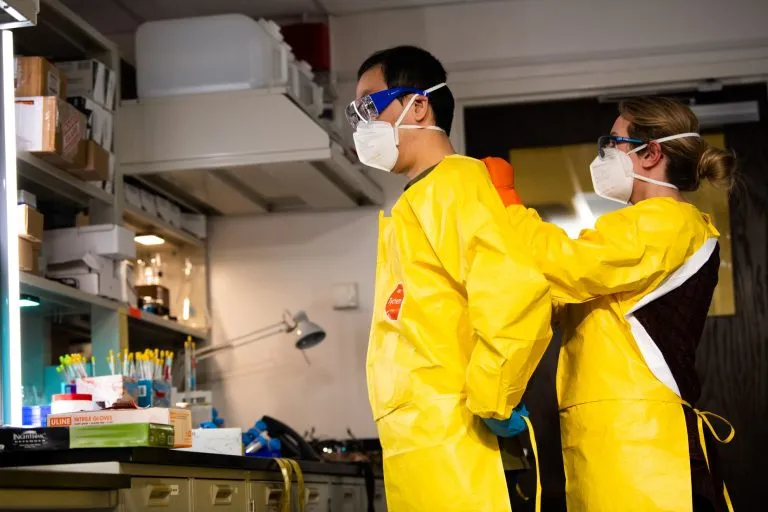Although the new coronavirus pandemic has dominated the news over the past two years, another pandemic has claimed the lives of more than 100000 Americans each year Fentanyl, a synthetic substance, was originally manufactured as a painkiller, but later evolved into a lucrative and dangerous street drug, which is at the core of the opioid crisis

In addition to thousands of deaths each month, these two substances have a key feature: the ability to change or be changed into something unexpected, causing difficult challenges. The first step in protecting yourself is to be aware of the danger.
Fentanyl variant: threat
The novel coronavirus strain has evolved variants like Omicron, which can effectively bypass the body's defense system. Fentanyl also has variants, and its chemical structure has a greater impact on the body, making it more lethal and addictive. To avoid detection, evade the law and earn more money, enterprising chemists around the world are busy experimenting in temporary laboratories to create new and illegal versions of painkillers - its basic form is estimated to be 100 times more effective than morphine.
Scientists at the northwestern Pacific National Laboratory (PNNL) of the U.S. Department of energy estimate that fentanyl has hundreds of millions of possible chemical variants, so-called analogues. Each variant becomes a reality in the hands of an enterprising chemist, which means risk.
"New forms of drugs are emerging," said Richard ozanich, a PNNL scientist who is using funds from the Department of Homeland Security to solve the fentanyl crisis. "This means that sometimes we don't know what we're looking for; a new form may not yet appear on law enforcement radar."

The database saved lives
First responders rely on a database of the chemical structures of known fentanyl variants. It's like a set of chemical fingerprints of harmful drugs and other harmful substances. It is very important to keep fentanyl library updated. Drug traffickers and unscrupulous chemists constantly modify compounds in small but influential ways - enough to create substances that escape detection, so that drug traffickers can escape prosecution and still have deadly power.
Many of the illegal substances entering the United States originate in countries such as Mexico. Their creators worked on analogues that were more addictive or easier to manufacture. Or they create forms that can be diluted more effectively to increase profits, or to increase counterfeit drugs and other illegal substances. Every unlisted variant will give criminals a loophole - an opportunity to evade the law.
"Even if a compound is not on the list, it can kill you," ozanich said He pointed out that some forms of compounds are so powerful that they can be deadly in no more than a grain of salt.
Ozanich leads a project funded by the Department of Homeland Security's Bureau of science and technology to help bridge this gap. His team is updating the databases used by police, hazardous materials teams and other first responders to identify and understand the hazardous substances they encounter. Police, firefighters and other personnel usually carry portable instruments and can access these databases to let officials know what they encounter in real time.
PNNL has added about 50 chemical structures to these databases, including information on drugs such as heroin, cocaine and methamphetamine. A larger database reduces the chances for police, firefighters, paramedics or others to face dangerous unknown substances they cannot identify.
"Law enforcement and other officials need to make quick decisions in dangerous situations. Do we need to block the area? Are we safe? Are we dangerous to others? Improving information to make these decisions quickly is the focus of our efforts," ozanich said.
He added: "knowing what dangers you face at the scene, you can take appropriate action to protect yourself and the public."

Beyond database
Other PNNL scientists are using powerful computers and innovative computational chemistry methods to predict potential fentanyl analogues that have not yet been created - which may be added to the database even before they enter the market. This study is part of an attempt to ultimately reduce reliance on libraries generated using the results of physical sample analysis.
Instead, PNNL scientists are studying how to predict and arrange potential chemical structures in samples based on an understanding of basic scientific principles. This will allow early identification of threats from alternative forms of fentanyl or other sources, rather than relying solely on what is already known.
The study of fentanyl is fully in line with the scope of PNNL's work to find, detect and measure substances or phenomena of interest. These substances include explosive residues, rare gases from nuclear explosions, dark matter, traces of other illegal drugs, hints of radiation, and dangerous chemicals such as ricin and sarin. Researchers are actively looking for new ways to detect or - preferably - predict and prevent these threats before they exist.
"This capability is ultimately proactive situational awareness - that is, it is possible to stay ahead of the threat in time to help law enforcement and first responders effectively mitigate the threat," said kabrena Rodda, a senior scientist at PNNL, who leads many projects to combat chemical threats.
Rodda added: "as this capability matures, we are excited about the potential to go beyond simply identifying threats and apply it to new applications to ensure people's safety."

Ensure the accuracy and safety of the site
The database update is part of a broader two-year project led by ozanich to assess the performance of detection equipment used by emergency personnel across the United States. PNNL has brought together 14 manufacturers of 21 key instruments used by first responders and others to detect and measure fentanyl. These instruments cover almost all forms of fentanyl found on the street today.
Through their efforts, ozanich and his colleagues' current work will permeate almost all fentanyl incidents faced by police and others across the United States.
The project coincides with another DHS funded project led by ozanich, focusing on the fentanyl standard. With the support of ASTM International, he convened more than 100 scientists, first responders, drug enforcement officials, equipment manufacturers and others to jointly develop three new laboratory standards. Without appropriate standards, police and nursing staff will face greater risks when working.
The two standards relate to the performance of equipment and methods for field testing fentanyl and related compounds. The third standard is intended to provide guidance to first responders who encounter fentanyl on site. The standard benefits from a large amount of input from the first responders, and PNNL has a close relationship with them, partly through the Northwest Regional Technology Center.
One law enforcement officer who worked with ozanich was detective sheriff pakorn pattitha of the hazardous materials response Department of the New Jersey police department.
"Every day, we see different kinds of fentanyl mixed with all types of drugs and illegal pills," said patimetha, who majored in biochemistry at university and then went to teaching and law enforcement. Patimetha estimates that the proportion of drug samples containing fentanyl sent to the state's crime laboratory has soared from 5% to more than 90% in the past five years.
"The crime scene can be chaotic. We need to quickly and accurately identify fentanyl at the scene to ensure that everyone remains safe and properly protect the evidence of danger," patimetha added. "It's important to involve the first responder because we can explain the situation in real-world conditions. Rich involves first responders. We provide our input directly to ensure that these methods are effective and work as we need them."